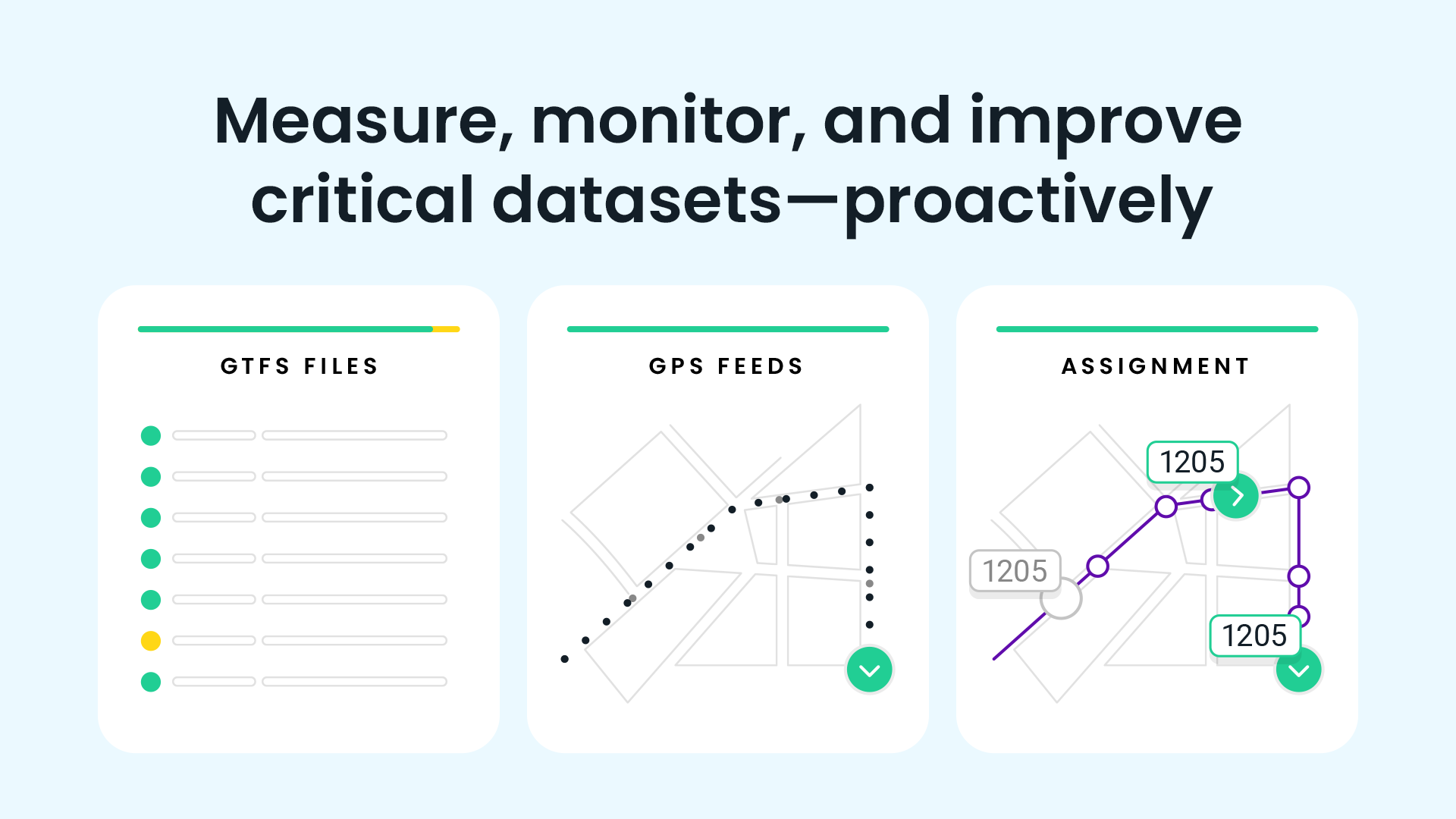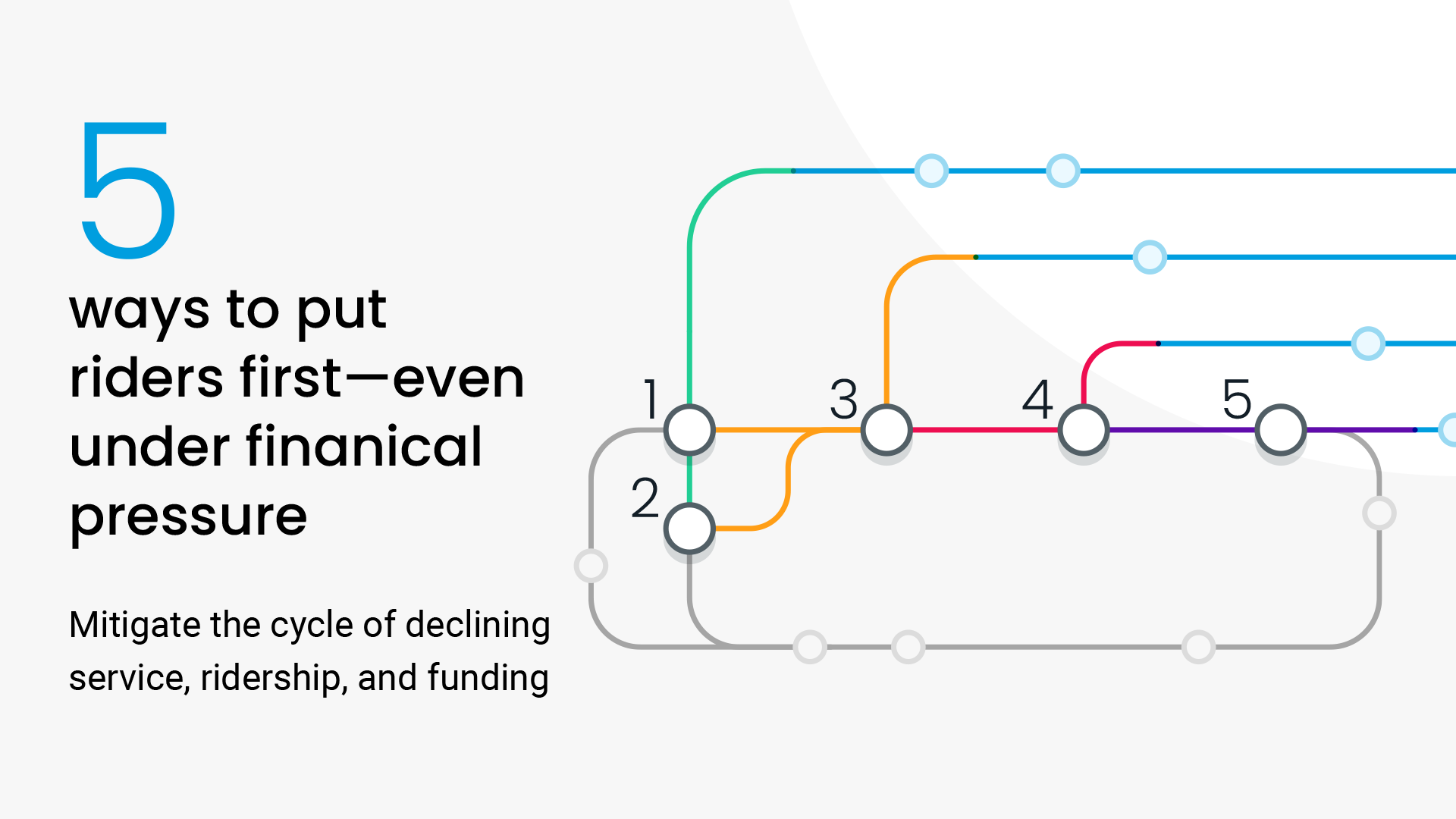
July 30, 2021
Ridership Data Is the Key to Bringing Riders Back

July 30, 2021
Ridership Data Is the Key to Bringing Riders Back
July 30, 2021
Ridership Data Is the Key to Bringing Riders Back
A sense of normalcy is slowly returning to our daily lives, but even as this happens, transit agencies shouldn’t expect riders to come rushing back to pre-pandemic levels. People’s habits have changed drastically during the pandemic, and attitudes around public transit in particular are near the top of the list of what’s changed.
This raises a simple question for transit agencies sketching out their post-pandemic plans. What should agencies do to rebuild their transit service for the post-pandemic rider, and how can they bring back ridership when rider demand remains unpredictable and funding is uncertain?
The answer lies with high-quality, up-to-date ridership data. Building attractive post-pandemic transit service comes down to the who, where, and how much behind changing habits. Without these insights, agencies are simply flying blind.
In order to bring riders back, agencies will have to proactively attract them, not simply return to business as usual. Agencies need to come back stronger than ever, and to do that, they will need to take bold action in four key areas, all of which are dependent on robust, easily accessible ridership data.
1. Adapting to “the new commute”
Over the last year, traditional commuting patterns have been upended. Agencies that are accustomed to using conventional wisdom as an ingredient to their planning decisions should be aware that convention has been firmly unseated. Only a data-driven approach can help agencies understand the new needs of transit riders.
Many workers have already begun to return to offices this year, but recent studies show that 22% of workers will continue to work remotely as late as 2025. Other studies forecast even higher numbers.
These disruptions will be far-reaching for transit. Central business districts may decentralize, peak service hours might become less important, and large urban centers might shrink as populations move to less expensive areas. And even for the workers who do return to downtown offices, many have become accustomed to driving their cars during the pandemic and will be slow to switch back to taking public transit.
With high-quality ridership data, agencies can more precisely pinpoint which neighborhoods, corridors, and job centers are the top priorities for limited transit resources. Without it, however, the new needs of communities may go unnoticed and, as a result, go unmet, further eroding confidence in public transit on the whole. All this adds up to an urgent need for real-time and up-to-date historical ridership data that accurately reflects evolving travel and commuting patterns.
2. Making the best use of limited operating budget
The key to rebuilding rider trust after the pandemic lies in the same fundamentals as ever: providing fast, frequent, and reliable service in the places where people need to go. This is a challenge even in the best of times, but when funding is uncertain, it can feel like wishful thinking.
In the US, the latest infrastructure bill should help provide some budgetary assurance in the short term; even so, the 2021 State of Public Transit reported that 81% of surveyed transit professionals identified budget as their top concern in 2021.
One of the best antidotes for an uncertain budget is to optimize the budget that you can count on. Up-to-date historical ridership data can help agencies analyze common line-items that compete for limited resources. For example, are there lightly ridden routes that could forego a trip or two without significantly impacting the overall rider experience? Are there intersections on high-ridership routes that would benefit from low-cost projects like targeted transit signal priority or devoted bus lanes? During the evaluation phase of proposed projects, would ridership affect the likelihood of approval?
High-quality, granular ridership data holds the answers to all of these questions and directly impacts the speed, frequency, and reliability of transit service system-wide. In an industry where political concerns often have an outsize influence in decisions that affect thousands or even millions of people, every bit of cold, hard data grounds decisions in what matters most -- providing fast, frequent, and reliable service to as many people as possible.
3. Integrating fixed-route and on-demand service
On busy corridors, fixed-route service is the most effective and efficient mode of moving people from A to B. On so-called “coverage” routes, however, fixed-route service may not always be a cost-effective way to meet the needs of the community.
Microtransit and other on-demand configurations have the power to complement and maximize the use of these fixed routes. Enabled by mobile ticketing and payments, as well as multimodal trip planning and booking, these services can provide transit to riders in areas where fixed routes aren’t feasible.
By using real-time ridership data, agencies can flip between on-demand and fixed-route configurations based on real-time demand and efficiency thresholds, optimizing for ridership, operational resources, and budgets. In this way, new technology can complement core transit service, and agencies can remain agile as we reach a new equilibrium in the post-pandemic world.
4. Keeping passengers safe—and feeling safe
Federal, state, and local governments may be lifting their mask mandates, but crowding on transit vehicles will continue to be an issue for some time. Dr. Anthony Fauci predicts that social distancing will continue to be important through 2022, which means that transit agencies will need an effective way to monitor real-time vehicle loads to ensure social distancing for transit riders who cannot, or will not, get vaccinated.
Of course, rider safety is always a goal unto itself. But in a time when agencies are still persuading riders to take transit, riders must feel safe too. Social distancing compliance will be part and parcel to enticing riders back onto busy buses and trains when public confidence in transit is fragile.
The same passenger counting equipment that powers historical ridership can power real-time vehicle crowding information. Armed with up-to-the-minute information about onboard loads, operations staff can take action, in the moment, when vehicles rise above safe thresholds. For example, dispatchers can instruct operators to continue with no more boardings, or can put flex buses into service if feasible. Agencies can also empower riders to make the decision for themselves by broadcasting vehicle crowding information via real-time passenger information channels. All of this will improve rider safety, but it also improves riders’ perceptions around safety in a time when it matters most.
Building back post-pandemic requires ridership data
The future is looking brighter today than at any time over the last year and a half, but this should not spell complacency for the transit industry. A quick recovery from last year’s plunge in transit ridership is far from given. It will take intention and effort to regain public confidence in transit, and adopting robust ridership data will be at the center of the push.
It’s important to note that merely having ridership datasets will not be enough. Ridership data must be easily accessible to all staff who need it, and up-to-date so that it paints an accurate picture of what’s actually happening on the ground. All ridership data is not created equal, and transit agencies will have to invest in tools that can play a direct role in improving service and the rider experience.
The good news is that transit decision makers are more open than ever to reshaping the status quo. The moment calls for bold action across the board, and the industry has a golden opportunity to improve public transit. Equipping teams with the ridership data they need will be at the heart of building back better.
Request a demo
The rich text element allows you to create and format headings, paragraphs, blockquotes, images, and video all in one place instead of having to add and format them individually. Just double-click and easily create content.
Last Name, Agency

What’s a Rich Text element?
What’s a Rich Text element?
What’s a Rich Text element?
What’s a Rich Text element?
What’s a Rich Text element?
The rich text element allows you to create and format headings, paragraphs, blockquotes, images, and video all in one place instead of having to add and format them individually. Just double-click and easily create content.
Last Name, Agency
Static and dynamic content editing
A rich text element can be used with static or dynamic content. For static content, just drop it into any page and begin editing. For dynamic content, add a rich text field to any collection and then connect a rich text element to that field in the settings panel. Voila!
How to customize formatting for each rich text
Headings, paragraphs, blockquotes, figures, images, and figure captions can all be styled after a class is added to the rich text element using the "When inside of" nested selector system.
- text goes here
- text goes here
- text goes here
- text goes here
- text goes here
- text goes here









